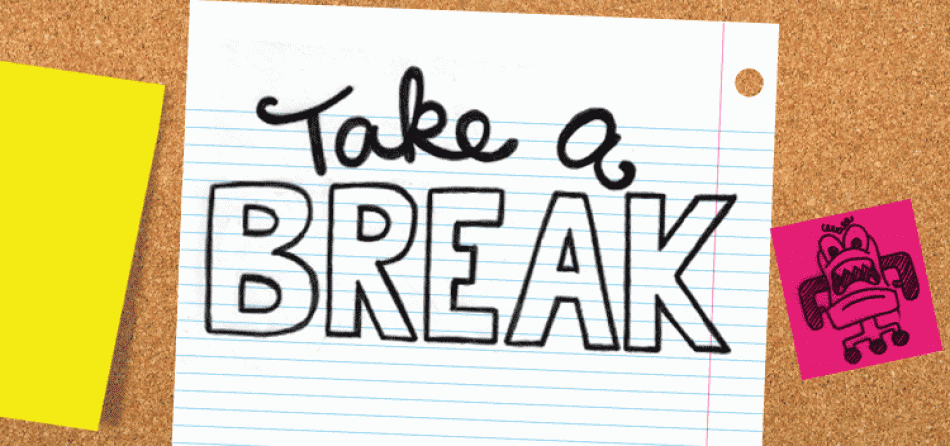Thirsty for a Strong Instructional Practice?

Have you ever noticed that the energy in the classroom after Spring Break can be a little . . . subdued? If you are like many academics, you work through Spring Break and expect your students to use the time to get caught up on reading and assignments. You might have found yourself feeling a little tired and grumpy when stepping back into the classroom after that “working vacation.” And your students—they’re tired and grumpy, too.
Take a SIP of This: Creating “True” Breaks — Not Assigning Work Over Break
It turns out that taking time off is actually connected to increased learning, focus, productivity, and creativity, as well as better health (Project: Time Off, 2016) (https://www.projecttimeoff.com/research/high-price-silence). Imagine coming back to the classroom after Spring Break full of energy and finding your students engaged, excited to discuss course content, and even bringing new creativity to their assignments! Fun fact: Lin-Manuel Miranda came up with the idea for his musical Hamilton on vacation (https://www.huffingtonpost.com/entry/lin-manuel-miranda-says-its-no-accident-hamilton-inspiration-struck-on-vacation_us_576c136ee4b0b489bb0ca7c2). Taking a break from work, whether it’s the work of teaching or the work of learning, allows us to replenish our energy and our brains.
Breaks can also protect against burnout, which occurs when prolonged stress results in mental, emotional, and physical exhaustion. Being a student is stressful, and for MSU Denver students, who are often also juggling work, caretaking, and other responsibilities, burnout is a serious threat. Students who are experiencing burnout simply cannot learn anymore. In one study, people who took a vacation had significantly lower rates of burnout than people who didn’t take a vacation (http://www.tandfonline.com/doi/abs/10.1080/10615806.2003.10382974). Unfortunately, because so many faculty have become accustomed to working on the edge of burnout, we may inadvertently encourage student burnout. You can help students break the cycle of burnout by not assigning work over Spring Break and sharing with them the importance of taking a true break.
A true break means not just being physically away from campus but being mentally away, too—participating in activities completely different from the ones associated with school, including critical reading, notetaking, analytical writing, etc. Taking a break is not about going somewhere else; students (and faculty) can experience the benefits of a vacation by putting their textbooks and computers away and engaging in a staycation, complete with leisure activities such as watching movies; skiing, hiking, snowboarding, and other outdoor pursuits; napping; going to a museum; and general goofing off.
What can you do?
- Tell students you won’t be working over Spring Break—and then don’t work over Spring Break. Be a role model.
- Tell students that their only homework for your class during Spring Break is to unplug their brains and come back refreshed and ready to learn.
- Create a discipline-related assignment that incorporates “data” or other experiences from a true break from school work to be completed after the break. For example, psychology students could take pre-Spring Break and post-Spring Break measures of their stress levels. In any class that deals with identity, students could reflect after break on how their activities during break align with or challenge norms. In almost any class, you could simply ask students when they return from Spring Break to share what they learned about relaxing and draw conclusions or produce documents that are relevant to your discipline, such as a statistical analysis in a math class, a poem in a creative writing class, or a set of instructions for properly relaxing in a technical writing course.
- Don’t schedule an exam for the day students return from Spring Break, which implies they should spend their break studying. Likewise, don’t make a major assignment due upon their return. If you already scheduled an exam or assignment to be turned in, bump it back a few days and explain to students why you are doing so.
- If you have a late work policy, stop the clock for Spring Break.
- If you teach online, encourage students to take Spring Break off by emailing them and posting an announcement to say that you will not be checking into the course during the break and you hope they won’t, either.
- Tell students who are behind that you will meet with them to talk about getting caught up after Spring Break. Let them know that you are doing this deliberately because taking the week off will actually help them get caught up in the long run.
It’s still a few weeks away, but we hope you and your students enjoy Spring Break!
Still Thirsty? Take another SIP of Creating “True Breaks — Not Assigning Work Over Break
- “Why Your Brain Needs More Down Time” by Ferris Jabr appeared in Scientific American in 2013 (https://www.scientificamerican.com/article/mental-downtime/)
- Project: Time Off (https://www.projecttimeoff.com/) is an organization that encourages Americans to take vacations from work. Their website is chock-full of helpful resources, most of which are geared toward employees taking time off from work but all can be applied to students taking time off from school.
- The video, “How to Deal with Student Burnout,” (https://www.youtube.com/watch?v=qd_mRapoPtg) is geared toward students and gives tips on taking breaks and why breaks are important.
